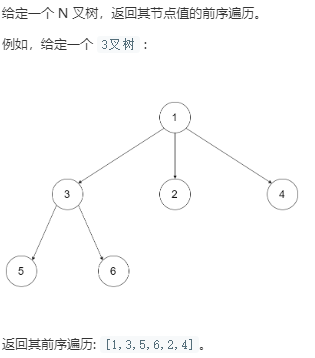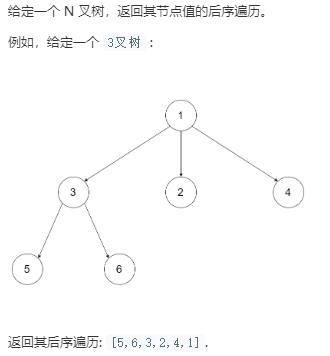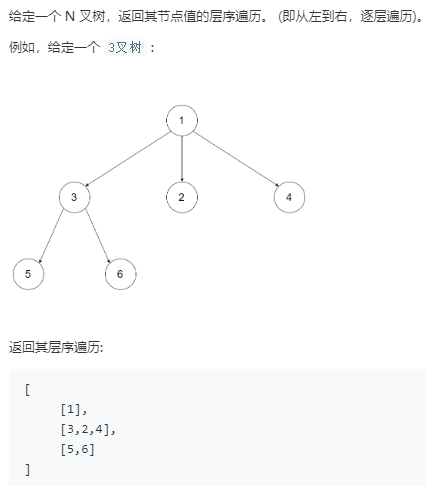Define:
class Node {
public int val;
public List<Node> children;
public Node() {
}
public Node(int _val) {
val = _val;
}
public Node(int _val, List<Node> _children) {
val = _val;
children = _children;
}
};
前序遍历

同二叉树前序遍历。
递归
private List<Integer> res;
public List<Integer> preorder(Node root) {
res = new LinkedList<>();
pre(root);
return res;
}
private void pre(Node root) {
if (root == null)
return;
res.add(root.val);
for (Node curr : root.children) {
pre(curr);
}
}
非递归
public List<Integer> preorder(Node root) {
List<Integer> result = new LinkedList<>();
if (root == null)
return result;
Stack<Node> stack = new Stack<>();
stack.push(root);
while (!stack.isEmpty()) {
Node temp = stack.pop();
result.add(temp.val);
for (int i = temp.children.size() - 1; i >= 0; i--) {
Node curr = temp.children.get(i);
stack.push(curr);
}
}
return result;
}
后序遍历

同二叉树的后序遍历。
递归
private List<Integer> res;
public List<Integer> postorder(Node root) {
res = new LinkedList<>();
post(root);
return res;
}
private void post(Node root) {
if (root == null)
return;
for (Node curr : root.children) {
post(curr);
}
res.add(root.val);
}
非递归
public List<Integer> postorder(Node root) {
List<Integer> result = new LinkedList<>();
if (root == null)
return result;
Stack<Node> stack = new Stack<>();
stack.push(root);
while (!stack.isEmpty()) {
Node temp = stack.pop();
result.add(0, temp.val);//change1
for (int i = 0; i < temp.children.size(); i++) {//change2
Node curr = temp.children.get(i);
stack.push(curr);
}
}
return result;
}
层次遍历

同二叉树的层次遍历。
public List<List<Integer>> levelOrder(Node root) {
List<List<Integer>> res = new ArrayList<>();
if(root == null)
return res;
Queue<Node> queue = new LinkedList<>();
queue.add(root);
int count = 1;
while (!queue.isEmpty()) {
List<Integer> list = new ArrayList<>();
while (count-- != 0) {
Node curr = queue.poll();
list.add(curr.val);
queue.addAll(curr.children);
}
count = queue.size();
res.add(list);
}
return res;
}